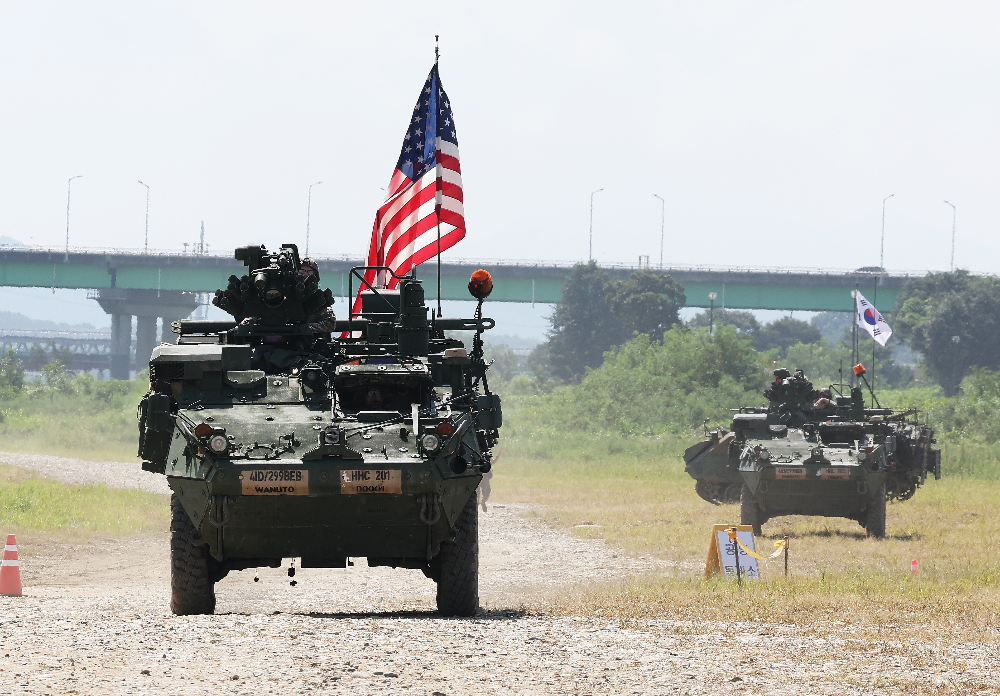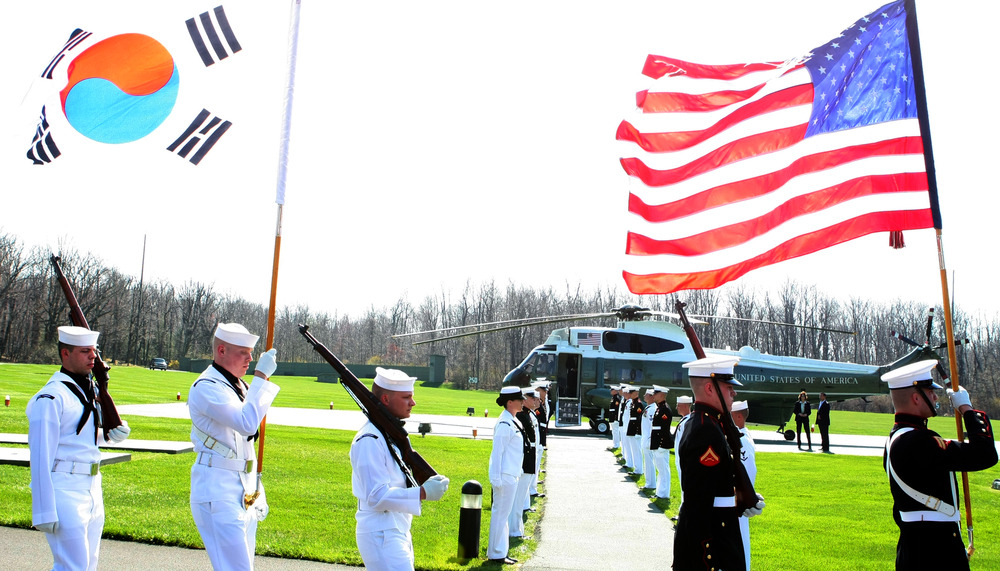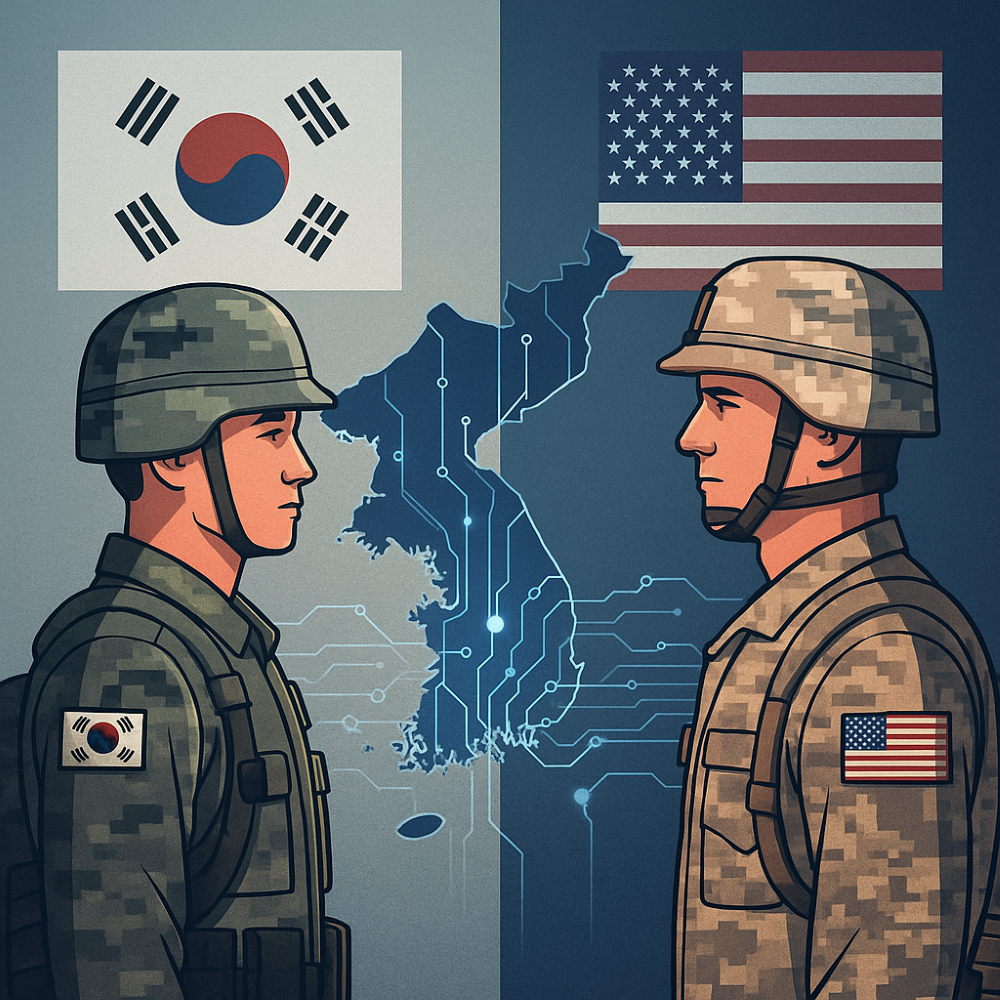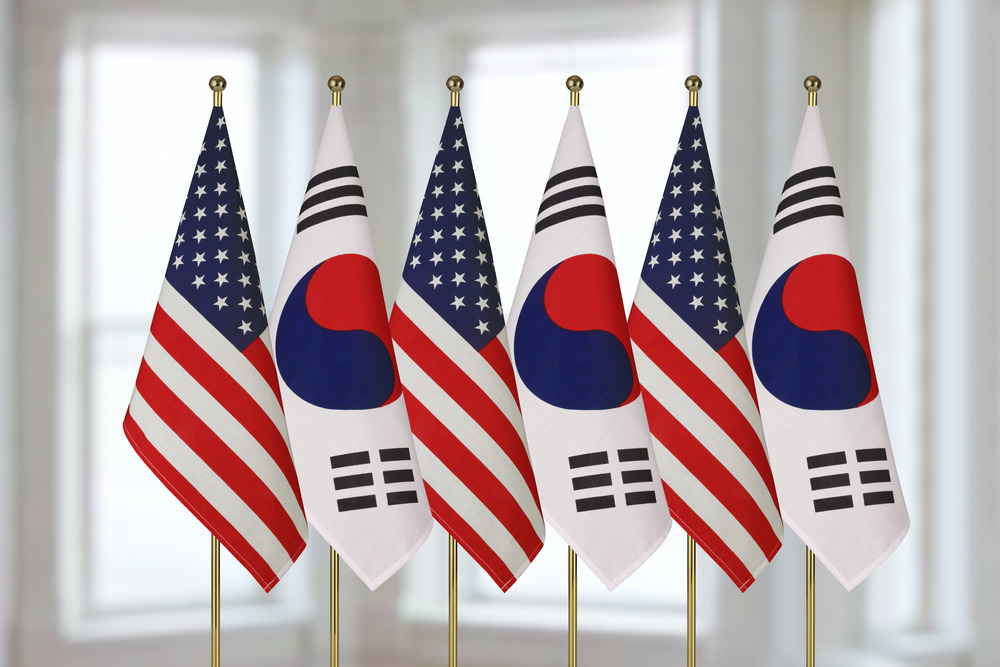
- #Security & Defense
- #South Korea
- #US Foreign Policy
- #US-ROK Alliance
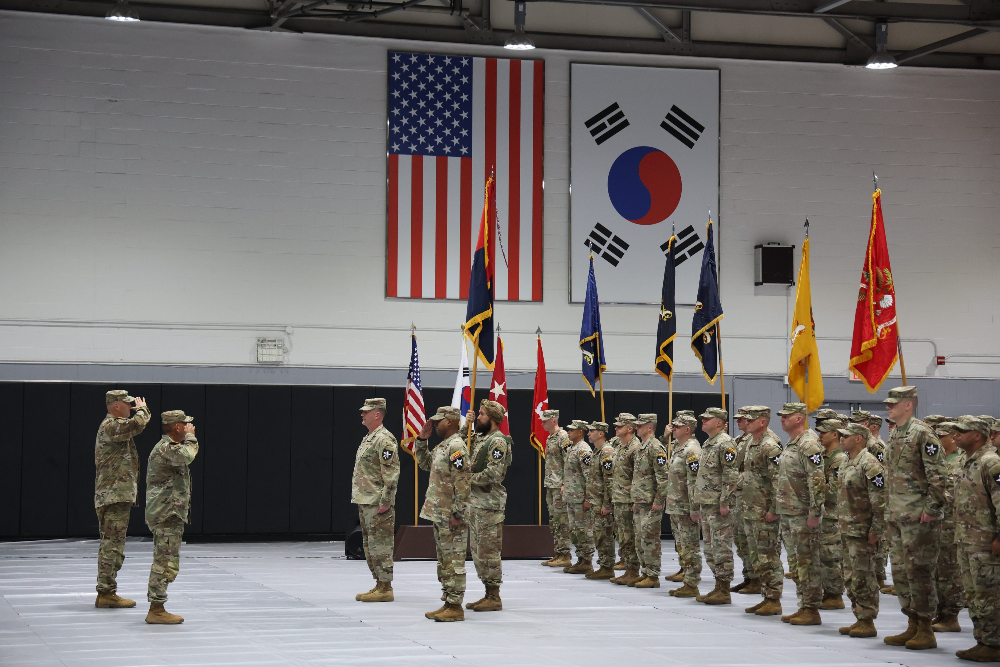
Key Takeaways:
1. Diverging Strategic Priorities: The U.S. and South Korea hold conflicting views on alliance modernization, as Washington seeks a flexible USFK to counter China while Seoul remains focused on deterring North Korea and maintaining current troop levels.
2. Recommendations for a Balanced Modernization: Washington should avoid rapid troop reductions or an overt anti-China focus for USFK and Seoul should accept greater responsibility for regional security beyond the Korean Peninsula.
3. The Path to a "Titanium" Alliance: A balanced approach is essential, combining U.S. flexibility with South Korean assurance by reinforcing USFK capabilities, deepening nuclear deterrence cooperation, and expanding Seoul's regional security contributions.
I. Introduction
The Republic of Korea–United States (ROK–US) alliance is undergoing accelerated change. For decades, it relied on a stable formula: a large US ground presence on the peninsula, ROK’s steady force buildup, and reliance on the US nuclear umbrella. Today, however, strategic simultaneity—where crises in Korea overlap with those in Taiwan or elsewhere in the Indo-Pacific and/or beyond—is forcing Washington to reassess priorities and posture. The Trump administration’s push for a leaner, more flexible US Forces Korea (USFK), combined with greater burden-sharing demands, reflects a broader shift toward allies carrying more responsibility in both local and regional security. Seoul, by contrast, interprets these changes through the lens of deterring a nuclear-armed Democratic People’s Republic of Korea (DPRK). Possible reduction in US troops raise fears of abandonment, sparking debates over autonomy and even nuclear armament, while Washington grows frustrated with Seoul’s reluctance to extend its role beyond the Peninsula.
These diverging ‘images’ of alliance modernization highlight both the opportunity and the perils of the present moment. If modernization is handled wisely, it can transform the alliance into a more adaptive, technologically advanced, and politically resilient partnership—what Markus Garlauskas has called a “titanium” alliance.[1]
But if mismanaged, it risks hollowing out deterrence, fueling alliance fatigue, and emboldening adversaries. The task, then, is not to resist transformation but to shape it: to reconcile Washington’s demand for flexibility with Seoul’s need for assurance, and to chart a path where modernization strengthens rather than fragments the alliance.
II. First Image of Alliance Modernization: What Washington Wants
While official definition of ‘alliance modernization’ remains absent on both sides of the ROK-US alliance, accumulation of Trump administration’s ‘preferred trajectory’ or ‘image’ of alliance modernization appears to entail two defining features.
First and foremost is ‘repurposed’ USFK. With vested interest in prioritizing a deterrence posture against China, Trump administration envisions USFK to be at least ‘dual purposed’ to check-balance not only the DPRK but mainland China. President Trump’s latest remarks on the ‘ownership’ of US bases in Korea during the Lee-Trump summit on August 25, 2025, should be reflected along President Trump’s pursuit to reclaim Bagram Air Base (AB) in Afghanistan. As Trump is outspoken about wanting the Bagram AB because it is “an hour away from where China makes its nuclear weapons,” referring to the Lop Nur nuclear test site (800 kilometers away from Bagram AB),[2] US bases in Korea for Trump administration are all the more indispensable bases against Chinese mainland. Robert Peters at the Heritage Foundation for instance has been one of strong proponents of US to maintain robust troop presence and bases in Korea, including future nuclear redeployment—not for DPRK nor Taiwan contingency, but to deter and prepare against mainland China.
The second defining feature of US’s alliance modernization is refitting USFK’s capabilities to meet the above purpose: to be more agile, flexible, lighter in ground forces, but refitted with new and advanced air power, missile defense, intelligence-surveillance-reconnaissance (ISR), cyber, and electronic warfare capabilities. The US’s Air Force in Korea is already being ‘repurposed.’ The 51st Fighter Wing at Osan Air Base (AB), for instance, has completed retirement of all A-10 aircrafts by October 1, 2025. The vacuum is refilled by relocating all F-16s deployed at Kunsan AB (8th Fighter Wing) to Osan AB, transforming Osan AB as a base for two “super squadrons” of F-16s. Subsequently, the ‘emptied’ Kunsan AB is being restructured by establishing permanent MQ-9 Reaper drone squadron (the 431st Expeditionary Reconnaissance Squadron).[3]
III. Second Image of Alliance Modernization: What Seoul Wants
In comparison, Seoul’s own image of alliance modernization reflects existential concerns about the DPRK, coupled with a need to balance relations with China. The desired prospect of alliance modernization for Seoul rests on four features or principles.
First is ‘Deterrence-First.’ Seoul insists on minimizing—if not zero reductions to USFK troop levels. While experts find some reduction in USFK’s ground forces inevitable, there is a consensus that a radical and unilateral reduction in troop level will critically undermine the credibility of US’s security commitment in the region, only to embolden and provoke adversaries. Even modest withdrawals (e.g., of the Stryker Brigade) raise abandonment fears and could trigger domestic debates over autonomy or nuclear armament.
Second is ‘Capability Build-Up Without Hollowing Out.’ Adjustments in USFK would be acceptable if accompanied by tangible capability enhancements of the USFK, followed by robust security assurances. The permanent F-35 squadron, continued extended deterrence commitments, etc, need to be reassured.
Third is ‘Gradual Modernization.’ Seoul prefers phased adjustments, ensuring that any regional role expansion does not jeopardize its ability to counter the DPRK.
Fourth is ‘Avoiding Sour Relations with China.’ While strengthening deterrence against DPRK, Seoul remains cautious not to provoke Beijing unnecessarily.
Given the varying images of alliance modernization, it is evident that Seoul and Washington may be at a divergent strategic horizon. The Trump administration views China as the primary challenge and wants USFK to play a role in transregional contingencies. Seoul remains focused on DPRK and wary of entrapment in regional contingencies, especially when President Trump’s China and alliance policy remain wavering and inconsistent.
IV. Concluding Note: Recommendations for Both Sides
[For Washington]
Stop Framing USFK as ‘China-Focused.’ Although the Interim National Defense Strategic Guidance initially highlighted deterring China and preparing for a Taiwan contingency, President Trump’s China policy has oscillated between engagement and confrontation. In pursuit of a trade deal, Washington repeatedly extended tariff deadlines, delayed decisions on TikTok, and even barred the Taiwanese president from transiting through New York. Overemphasizing the repurposing or “strategic flexibility” of USFK only risks narrowing Washington’s options in managing China. Put plainly, the more effective approach remains the old one: strengthening USFK capabilities under the banner of deterring DPRK.
Prevent Rapid Reductions of USFK. Sharp drawdowns would be read as diminished US resolve and capabilities, emboldening China, DPRK, and even Russia.
If China is the First Priority, Do Not Back Down on DPRK. If USFK is to be repurposed, US cannot simultaneously downplay DPRK’s nuclear threat or tolerate Pyongyang’s adversarial ‘two Korea policy,’ as doing so erodes justification for USFK’s presence in the region.
[For Seoul]
Do More Together. Seoul must reassess and recognize China’s growing encroachment in the seas and skies around the Korean Peninsula. The change is structural, driven by China’s expanding economy and military power. Maritime incursions, gray-zone activities, and PMZ violations illustrate that the threat is not hypothetical but present.
Accept Shared Regional Responsibility. Alliance modernization cannot succeed if Seoul insists on a Peninsula-only role. Proactive, albeit limited, contributions to regional security—ISR, missile defense integration, maritime domain awareness—strengthen both deterrence and Seoul’s leverage in alliance negotiations.
[More on Ways Forward]
On the basis of the above, Seoul and Washington should consider the following lines of efforts.
Filling Capability and Assurance Gaps.
If US ground forces should shrink, ROK must assume greater responsibility for early-phase ground operations. The US, in turn, should guarantee backstop support through long-range precision strike assets, survivable airpower, and rapid reinforcement capabilities. This division of labor requires Seoul to expand its defense budget, modernize its force structure, and accelerate procurement of next-generation systems such as ISR platforms, drones, and advanced fighters. Washington should complement this by ensuring consistent arms transfer, technology cooperation, and also trade or tariff accommodations that enable South Korea to sustain its defense buildup. Coordinated capability enhancement will prevent deterrence gaps and reassure both publics that modernization is not US retrenchment in disguise.
Continue Extended Deterrence Efforts via Conventional-Nuclear Integration (CNI).
Since the 2023 Washington Declaration and the creation of the Nuclear Consultative Group (NCG), Seoul and Washington have made progress in integrating nuclear deterrence with conventional operations. This progress should be consolidated. Depending on the speed and shape of alliance modernization, ROK’s participation in planning dual-capable aircraft missions, combined live exercises that link nuclear deterrence to conventional operations, and the flexible deployment of US tactical nuclear assets to the Korean Peninsula or its vicinity could provide necessary credible assurances for times of ‘mega transformation’ of the alliance. Maintaining regular operation of the Extended Deterrence Strategy and Consultation Group (EDSCG), NCG, and combined exercises is essential to anchor credibility. Declaratory assurances—such as reaffirming that any North Korean nuclear attack would bring “end of the Kim regime”—should remain explicit.
Balancing Flexibility with Assurance.
Alliance modernization should not be seen as a zero-sum choice between Washington’s regional flexibility and Seoul’s demand for assurance. A balanced approach means: (i) agile but credible USFK presence—lighter on the ground but stronger in advanced capabilities; (ii) phased adjustments to prevent shock or abandonment fears in Seoul; and (iii) greater use of rotational deployments and prepositioned equipment that sustain deterrence while preserving flexibility.
Deepening Regional Integration.
To be sustainable, modernization must gradually extend beyond a peninsula-only scope. South Korea can contribute in areas that avoid escalation but add real value—integrated missile defense, ISR sharing, maritime domain awareness, and participation in multilateral exercises with US allies such as Japan and Australia. These roles enhance deterrence against both DPRK and China, while giving Seoul greater leverage in alliance negotiations.
Strengthening Political Signaling.
Finally, modernization must be paired with active political management. Regular high-level consultations, coordinated strategic messaging, and consistent reassurance that USFK remains central to regional stability will reduce mistrust and prevent adversaries from exploiting alliance frictions.
All in all, the task ahead is not to resist change but to shape it. A balanced modernization requires combining Washington’s demand for flexibility with Seoul’s need for credible assurance. This means reinforcing USFK capabilities even amid potential ground force reductions, embedding conventional–nuclear integration through the NCG and extended deterrence mechanisms, and expanding ROK’s gradual but tangible contributions to regional security. If modernization proceeds along these lines, the alliance can evolve into a more resilient and adaptive partnership—one that deters the DPRK, manages China more effectively, and sustains allied confidence. If neglected, however, the two images may drift further apart, leaving the alliance vulnerable at precisely the moment it needs to be strongest.

Dr. Bee-yun JO is a Research Fellow in the Security Strategy Center at the Sejong Institute. Concurrently, she is a Visiting Research Scholar at Sandia National Laboratories, a Non-resident Senior Research Fellow at the Atlantic Council, and an Adjunct Professor at Yonsei University's Graduate School of Engineering. Her primary research interests include U.S. nuclear strategy, deterrence and extended deterrence, the ROK-U.S. alliance, and South Korea's defense strategy. Previously, she was an Associate Research Fellow at the Korea Institute for Defense Analyses (KIDA) from 2020 to 2025. Dr. Cho received her Ph.D. and Master's in International Studies from Seoul National University and holds a Bachelor of Fine Arts from the Rhode Island School of Design (RISD).
